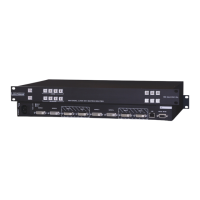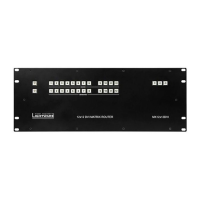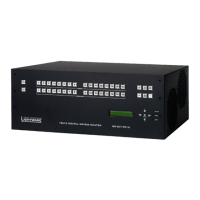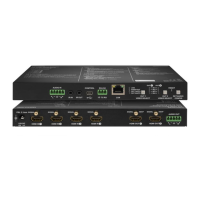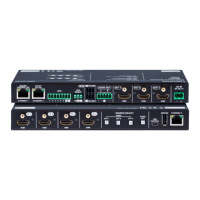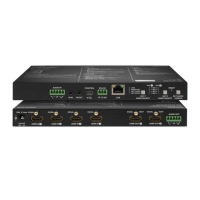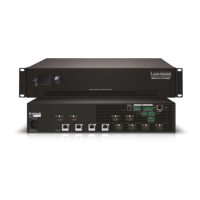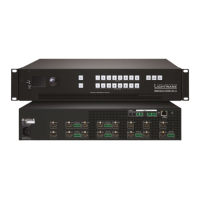Page 52 / 89 Section 8. Programmers reference
8. Programmers reference
Users can connect to the matrix through Ethernet or serial port. After establishing
connection, there is no difference between connection types (except some rare cases,
which are uniquely noted).
Lightware matrix routers can be controlled with external devices which can communicate
according to the router protocol. Lightware routers have a special protocol, but to
interoperate with third party devices, a secondary protocol is also provided.
Please see section 4.3 on page 21 about remote operation and connection setup.
8.1. Changing protocols
The router is equipped with multiple router protocols.
The currently used protocol can be viewed or changed any time on the matrix front panel
(see 4.3.6 on page 23) or with protocol commands (see 8.6.7 and 8.6.8 on page 63).
8.2. Protocol description
The protocol description hereinafter stands for Lightware protocol.
The matrices accept commands surrounded by curly brackets - { } - and responds data
surrounded by round brackets - ( ) - only if a command was successfully executed. All input
commands are converted to uppercase, but respond commands can contain upper and
lower case letters as well.
Legend for control commands:
<in> = input number in 1 or 2 digit ASCII format (01,5,07,16 etc.)
<out> = output number in 1 or 2 digit ASCII format
<in²> = input number in 2 digit ASCII format (01, 02, 10, 12 etc.)
<out²> = output number in 2 digit ASCII format (01, 02, 10, 12 etc.)
<loc> = location number in 1, 2 or 3 digit ASCII format
<id> = id number in 1 or 2 digit ASCII format
<id²> = id number in 2 digit ASCII format
<italic> = italic parameters are optional
CrLf = Carriage return, Line feed (0x0D, 0x0A)
● = space character (0x20)
→ = each command issued by the controller
← = each response received from the router
8.3. Batch commands
Usually the commands are sent one by one to the router, but this is not a must. Any
command can be send to the router in a batch. To do this, just use the same commands
(including { } brackets), but put the “CrLf” only at the end of the batch.
In most cases, batch commands are processed just as if they were sent one by one, but
for switching commands, the router groups them, and executes switching in one step. The
grouping is done only if the switching commands are received after each other, without any
interruption (e.g. other command sent between switch commands). In this case, the
response format changes, as not only one output’s state changed. The response will be in
the format as if {VC} were sent.
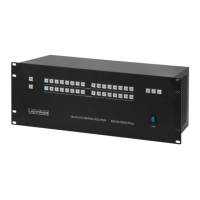
